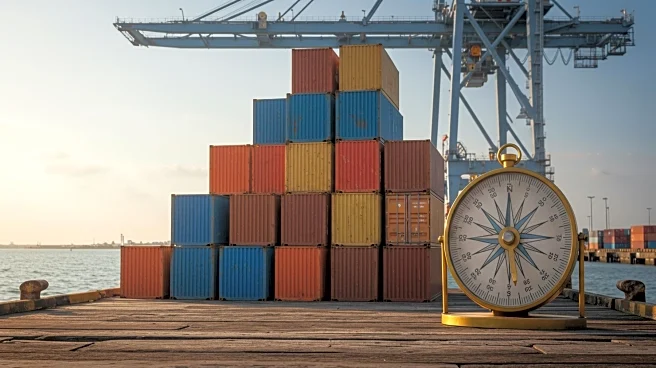Rapid Read • 7 min read
The Great Lakes iron ore trade experienced a downturn in July, with shipments totaling 5.1 million tons, marking a 10.9% decrease compared to the same month in 2024. According to the Lake Carriers’ Association, this volume is also 1.7% below the five-year average, indicating that the weaker conditions are not just a one-month anomaly. Year-to-date figures show a similar trend, with the Lakes fleet moving 21.8 million tons of iron ore, down 14.9% from the previous year and 7.3% below the five-year average. Despite the U.S.-flag fleet's capacity to transport over 90 million tons of dry bulk cargo annually, serving sectors such as steel, energy, and construction, the slowdown persists. Port activity varied, with Duluth, MN, leading in July with 1.14 million tons, while Two Harbors, MN, and Superior, WI, saw declines.
AD
The decline in iron ore shipments through the Great Lakes is significant for several industries, particularly steel production, which relies heavily on these shipments. The reduction in volume could impact steelmakers and related sectors, potentially leading to decreased production and economic activity. Fluctuating export demand and vessel scheduling issues are contributing factors, and the upcoming fall shipping season, traditionally a high-volume period, will be crucial in determining if demand can rebound. The situation highlights the interconnectedness of transportation logistics and industrial output, with potential implications for employment and regional economic stability.
As the fall shipping season approaches, stakeholders will closely monitor demand from steelmakers and overseas buyers to see if the trade can return to historical averages. Industry analysts will be watching for any shifts in steel production levels and export demand that could influence future shipment volumes. The performance of key ports and the ability of the U.S.-flag fleet to adapt to changing conditions will be critical in shaping the outlook for the remainder of the year.
AD
More Stories You Might Enjoy











